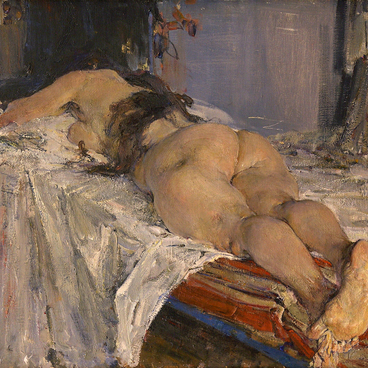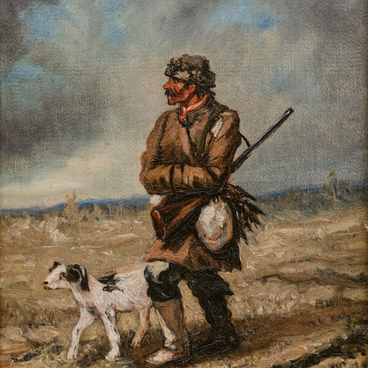The painter Grigory Ivanovich Belov is known to have been born in the first half of the 19th century, there is no exact information on the date of birth. According to some sources, he was a “house serf” of the Decembrists’ Fonvizin family.
In 1836 Grigory Belov was granted freedom. He had an aptitude for drawing and entered the Academy of Arts in St. Petersburg to study historical painting.
In 1839, the artist created a diploma work entitled “Saint Jerome”, which was awarded a certificate with the mark “for good mastery of historical painting”. Subsequently, in 1860, this painting was donated by the artist himself to the Moscow Public and Rumyantsev Museum, where it was kept until the Russian October Revolution.
In the 1920s, the work was transferred to the collection of the Alexander Grigoriev Art and History Museum, where it is still housed.
The painting depicts Jerome of Stridon, who was numbered among the saints by the Christian Church. He was one of the most learned of the Church Fathers. Jerome of Stridon was ordained a priest in Rome, traveled extensively and made a pilgrimage to the Holy Land.
In 374, he withdrew for four years to the desert of Chalcis and became an ascetic. It was here that he began to learn the Hebrew language.
Twelve years later, he settled in a monastery in Bethlehem, where he translated the Old and New Testaments into Latin.
Jerome of Stridon is venerated as a saint in the Orthodox and Catholic Churches.
Artistically and symbolically, the saint is most often depicted either as a cardinal in a wide-brimmed hat and red soutane, or as a man in simple vestments who has repented and beats himself on the chest with a stone.
Jerome was a papal adviser; the title of cardinal was created later and given to him posthumously.
The artist conformed to all the canons of academic
classicism: the biblical scene is painted against a dark and deep background,
the face of the saint is highlighted with golden color, the figure is
half-naked, there are no unnecessary details in the interior and appearance of
the saint.


